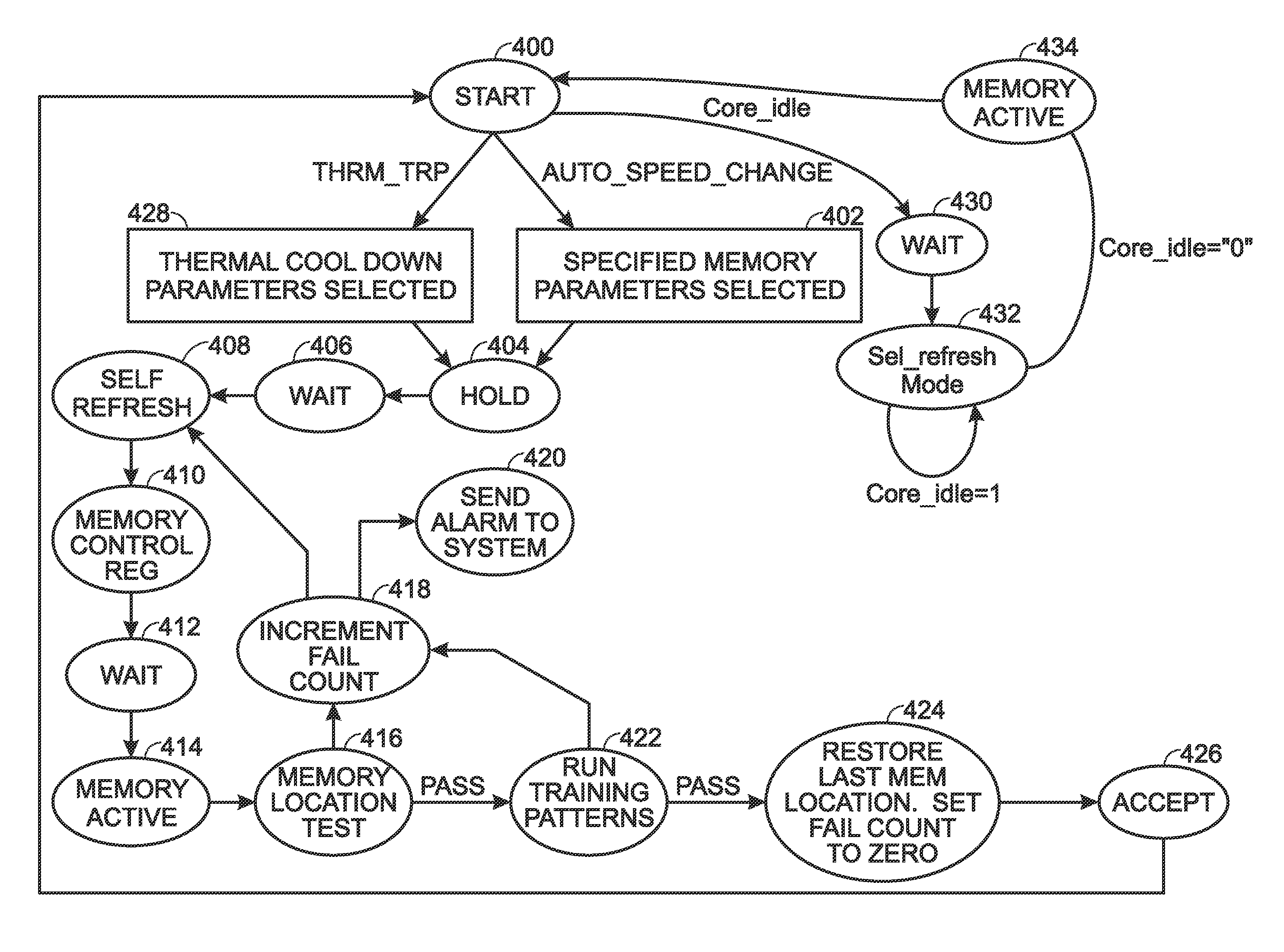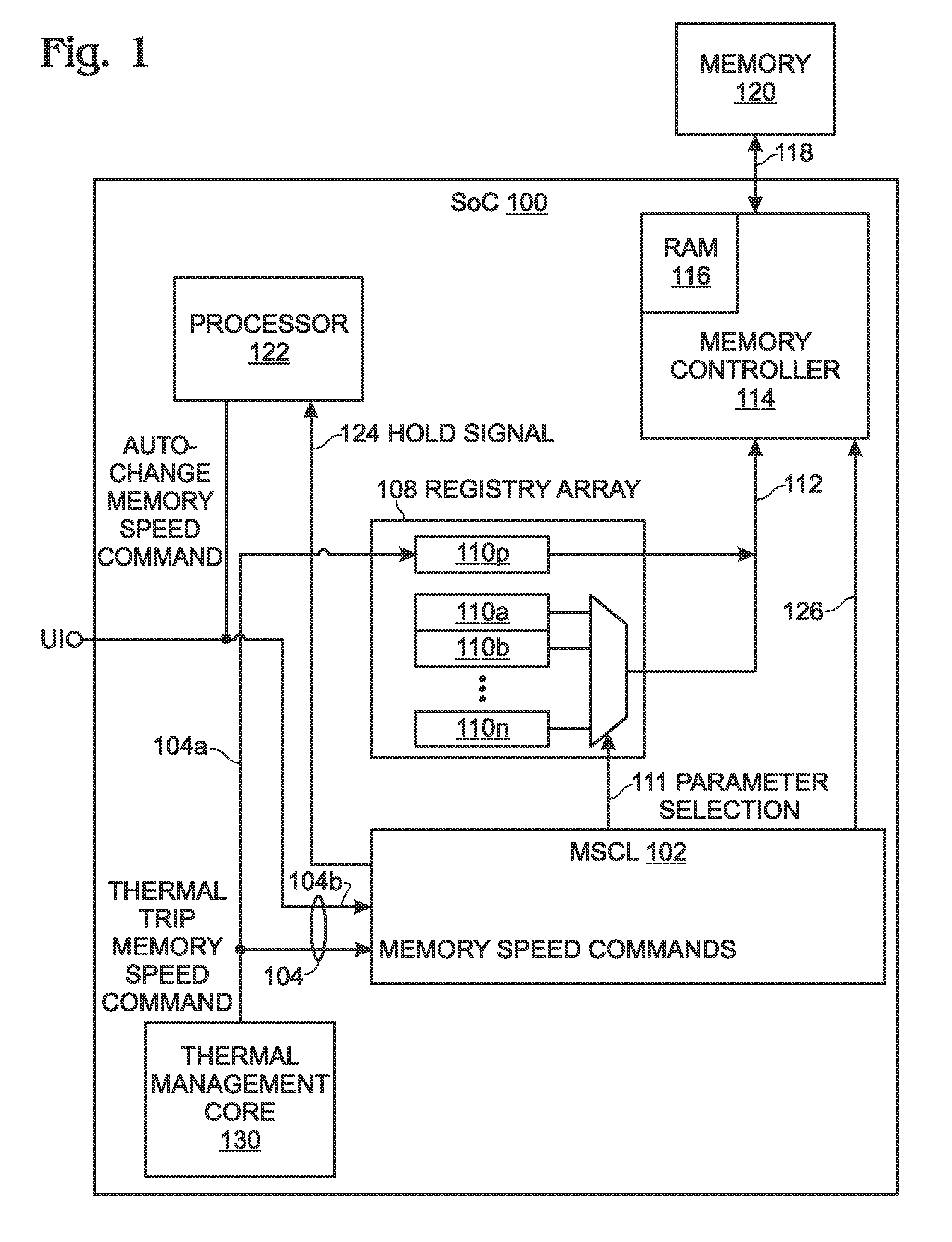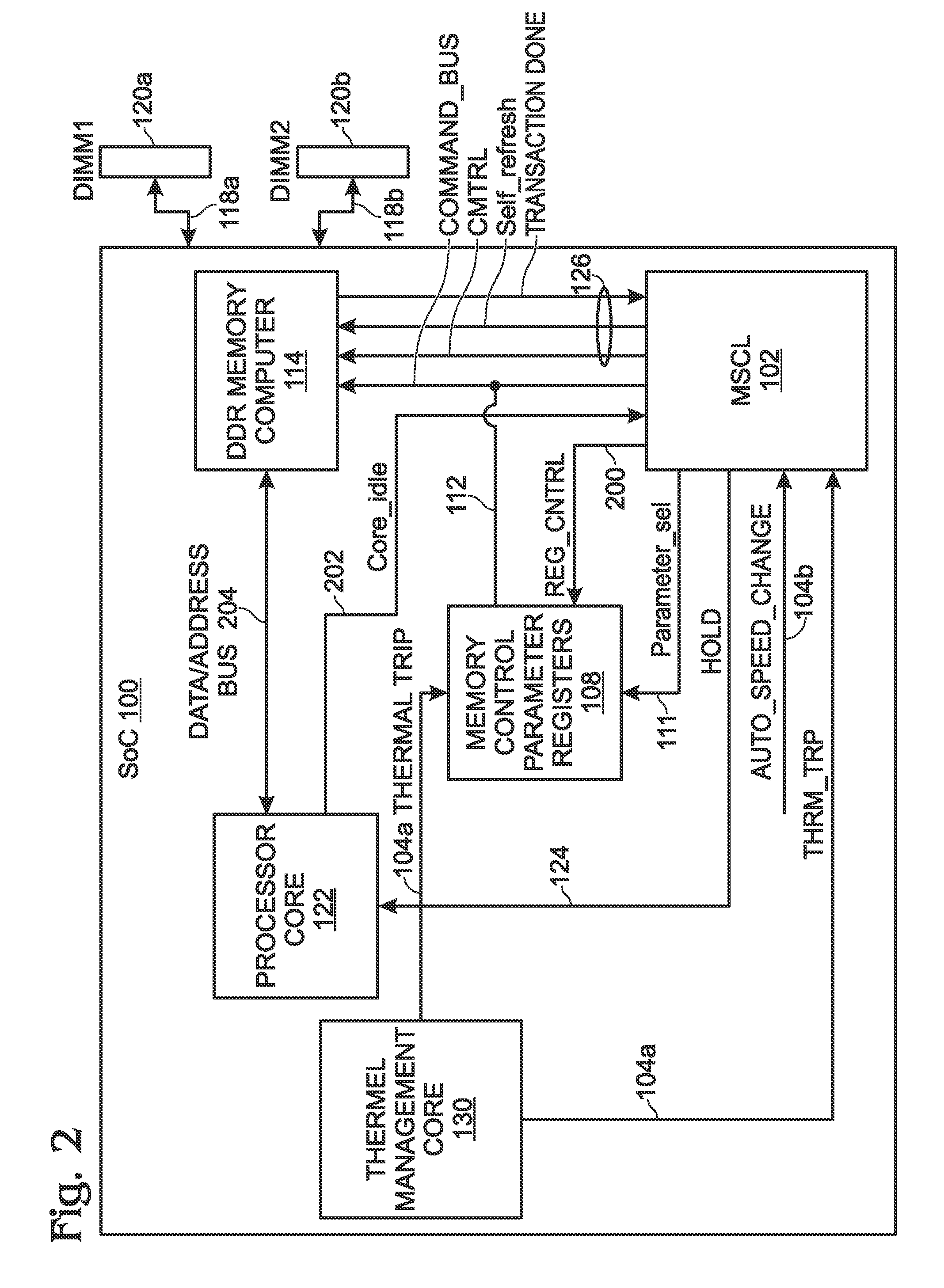System-on-chip with memory speed control core
a technology of memory speed control and system on-chip, applied in pulse generators, instruments, pulse techniques, etc., can solve the problems of reducing the number, increasing the complexity of ddr memory controllers, and increasing the difficulty of adding more channels, so as to improve the power efficiency rate, speed parameters of memory controller ram can be modified, and memory can be slowed.
- Summary
- Abstract
- Description
- Claims
- Application Information
AI Technical Summary
Benefits of technology
Problems solved by technology
Method used
Image
Examples
Embodiment Construction
[0026]FIG. 1 is a schematic block diagram of a system-on-chip (SoC) with memory speed control logic to control memory maintenance and access parameters. The SoC 100 comprises an internal hardware-enabled memory speed control logic (MSCL) core 102 having an interface on line 104 to accept memory speed commands and an interface on line 106 to supply parameter select commands. The SoC 100 includes an array 108 of memory control parameter registers 110 having an interface on line 111 to supply a selected a set of parameters from one of the registers 110. Shown are registers 110a through 110n, where n is a variable not limited to any particular value. A memory controller 114 has an interface on line 112 to accept the selected set of parameters from the register array 108, to replace an initial set of parameters in RAM 116. The memory controller 114 has an interface on line 118 connected to an off-SoC memory 120. The memory controller 114 manages the off-SoC memory 120 using the set of pa...
PUM
 Login to View More
Login to View More Abstract
Description
Claims
Application Information
 Login to View More
Login to View More - R&D
- Intellectual Property
- Life Sciences
- Materials
- Tech Scout
- Unparalleled Data Quality
- Higher Quality Content
- 60% Fewer Hallucinations
Browse by: Latest US Patents, China's latest patents, Technical Efficacy Thesaurus, Application Domain, Technology Topic, Popular Technical Reports.
© 2025 PatSnap. All rights reserved.Legal|Privacy policy|Modern Slavery Act Transparency Statement|Sitemap|About US| Contact US: help@patsnap.com



